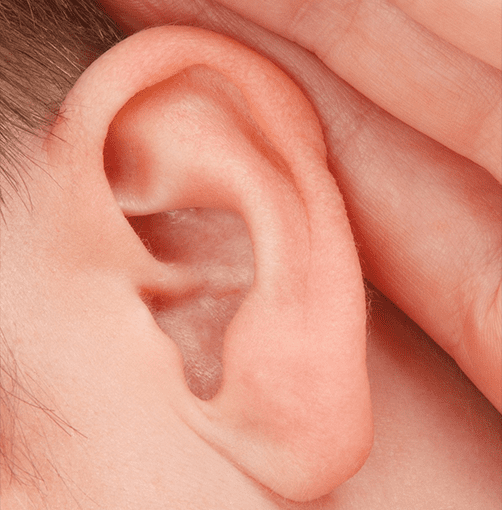Hearing Healthcare Services
The health of your auditory system is our primary concern.
You may have been referred to us by your primary care doctor, or Ear, Nose and Throat Specialist for a comprehensive audiological (hearing) evaluation; or, you may be in our office seeking hearing aids. Whatever the reason, the first thing we do is determine the cause of your hearing loss and rule out any serious health conditions. During your visit, we will thoroughly examine the health of your auditory system utilizing advanced diagnostic test equipment, review the results with you, and send a written report to your physician(s).
Education is the first step to preserve and improve your hearing health.
Otoscopy
An otoscope is what the doctor uses to look inside of your ear. Via otoscopy, we will be able to determine the health of your external ear and eardrum to better understand if your hearing difficulties may stem from abnormalities of the ear such as: build-up of earwax, a hole in the eardrum, inflammation, or infection.
Immittance
Immittance testing refers to the diagnostic testing of the middle ear system. Immittance measures can be used to assist in determining type and degree of hearing loss.
- Tympanometry: Measures the movement of the eardrum. Tympanometry is useful to identify middle ear pathology such as a hole in the eardrum or ear infection. It can also be used to determine if earwax is completely blocking the ear canal.
- Acoustic Reflex Testing: The acoustic reflex is a muscle response to loud sounds. During testing, we are determining whether the muscle is reacting at normal sound levels, at louder than normal sound levels, or is not reacting. When administered and interpreted accurately, acoustic reflex testing gives diagnostic information regarding the integrity of the facial nerve, auditory nerve, and a portion of the auditory areas of the brainstem.

Speech Audiometry
Speech audiometry identifies the patient’s ability to identify various levels of speech in different listening environments. We test how quietly and accurately you can understand speech in quiet, as well as incorporate listening in noise tests to identify how difficult it may be to listen in complex listening environments. Speech audiometry test results are used in helping to identify appropriate levels of technology and programming information for hearing aid selection.
- Pediatric Speech Audiometry: Children that are not yet able to repeat words are asked to identify and point to body parts (i.e. nose, mouth, hair, etc.), or may be asked to point to pictures of the word being said. In very young children that are not yet aware of the names of body parts or pictures, we utilize familiar sounds and songs to simulate interest and attention to determine how quietly he or she can identify speech is being presented.
Improve your quality of life. Get evaluated.

Auditory Processing Evaluations
In order to “hear”, you not only need your ears, and an intact auditory system; but also a properly functioning brain that is able to store, organize and retrieve auditory information. Auditory Processing Disorder occurs when the auditory centers of the brain do not function properly, although peripheral hearing (what the diagnostic hearing test evaluates) is normal.
The auditory processing evaluation is a thorough evaluation aimed at tasking the auditory centers of the brain in more difficult listening environments. Multiple subtests are administered during the auditory processing evaluation focusing on listening in noise, listening to filtered words with pieces “missing”, listening to two different stimuli (often words or sentences) in both ears, and listening to sped-up (i.e. Mickey Mouse) sentences.
The auditory processing evaluation is time intensive and can only be performed after normal peripheral hearing sensitivity has been determined by the diagnostic audiological evaluation. Treatments for auditory processing disorders vary per individual and identified area of auditory processing weakness.
Cerumen Removal
Although cerumen (ear wax) is healthy and serves an important role in your ear health, it sometimes can block up the ear canal causing a hearing loss and must be removed. Should it be determined during otoscopy there is a buildup of cerumen (ear wax) in the ear canal, we utilizing various techniques to remove the wax from the ear canal. Sometimes it may be necessary to use a softening agent for a few days prior to removal.
Be sure to like our pages on Facebook
LA Hearing Center is co-located in Lewiston with Sandcastle Clinical & Educational Services Like LA Hearing CenterLike Sandcastle
Address
72 Strawberry Ave
Lewiston, ME 04240
Contact Us
P: (207) 786-3305
F: (207) 517-6163
info@lahearingcenter.org
